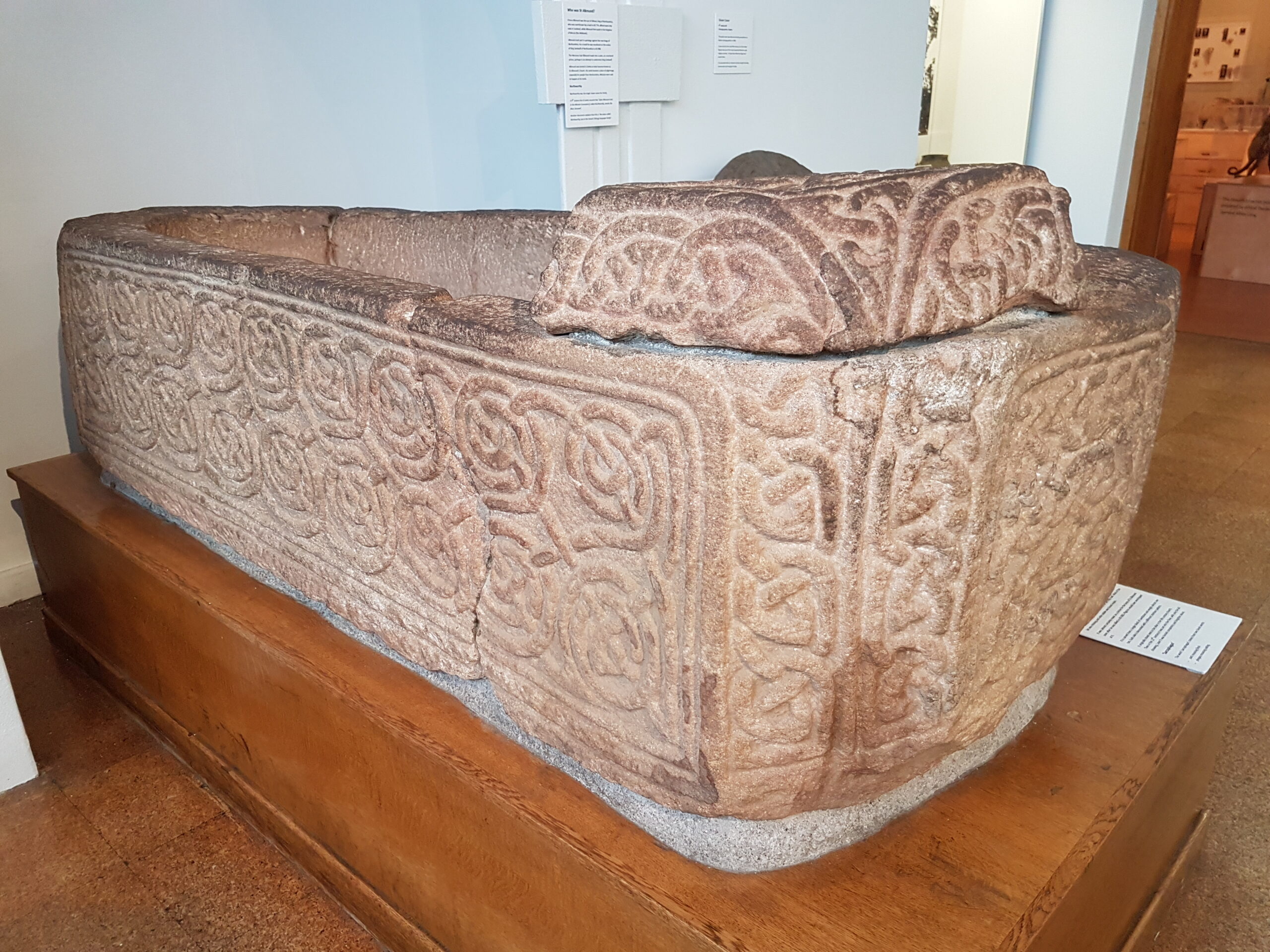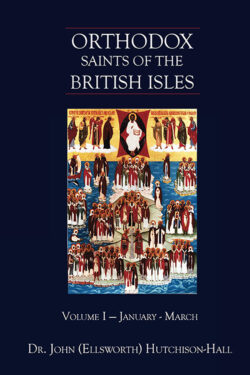
Orthodox Saints of the Pre-Schism
See of Rome
19th March (NS) — 6th March (OS) 2024
BALDRED (BALTHER), a Scottish bishop thought by many to have been the successor of St. Kentigern Mungo (13th January) at Glasgow, St. Baldred ended his life as an anchorite at Bass Rock on the coast of the Firth of Forth. He reposed circa 756 and his relics were enshrined in Durham with those of St. Bilfrid (vide infra).
BASIL, an early fourth century Bishop of Bologna. Consecrated by Pope St. Sylvester (31st December), St. Basil ruled the See for twenty years.
BILFRID (BILLFRITH), a hermit at Lindisfarne, St. Bilfrid was an expert goldsmith and bound in gold the Lindisfarne Gospels, written, and illuminated by St. Eadfrith (4th June). His repose took place between 740 and 756, though the day is uncertain; 6th March is the anniversary of the translation of his relics, along with those of St. Balther (vide supra), to Durham.
CADROE (CADROEL), the son of a Scottish prince, St. Cadroe studied at Armagh in Ireland. He then went to France, where he received monastic tonsure at the Abbey of St. Benedict on the Loire (abbaye de Saint-Benoît-sur-Loire — Fleury Abbey). Soon he was made Abbot of the new Abbey of Waulsort on the River Meuse, present-day Namur Belgium. Finally, St. Cadroe was made Abbot of the Abbey of Saint Clément, in Metz. St. Cadroe reposed in 976.
CHRODEGANG, mayor of the palace of Austrasia Charles Martel's (†741) prime minister, St. Chrodegang was a layman when he was made Bishop of Metz in 732. Maintaining the premiership whilst also Bishop, Chrodegang founded Abbey of St. Gorgonius of Gorze (abbaye Saint-Gorgon de Gorze) in 749, and St. Peter's Abbey on the Moselle, as well as providing significant assistance to Gengenbach (Kloster Gengenbach) and Lorsch (Reichsabtei Lorsch) Abbeys. St. Chrodegang reposed in 766.
CYNEBURH, CYNESWITH, and TIBBA, SS. Cyneburh and Cyneswith were daughters of Penda of Mercia in England, who was notorious for his opposition to Christianity. On the death of her husband, Alchfrith of Northumberland (†c. 665), St. Cyneburh founded a monastery in Castor in Northamptonshire. She was joined by her sister St. Cyneswith, who succeeded her as abbess, and their relative St. Tibba. Circa 680 is given as the year of their repose, and the relics of all three were enshrined in Peterborough Abbey.
FRIDOLIN, an Irishman who became a monk at the Abbey of SS. Peter and Paul of Luxeuil (abbaye Saint-Pierre et Saint-Paul de Luxeuil). He spent a great deal of time wandering around present-day France, Germany, and Switzerland, building churches, and evangelising the Alamanni of the Upper Rhine. St. Fridolin later founded Säckingen Abbey (Stift Säckingen) in present-day Bad Säckingen, Baden-Württemberg in Germany. St. Fridolin reposed circa 540.
MARCIAN, after being converted by the Apostle Barnabas (11th June), St. Marcian is said to have been consecrated the first Bishop of Tortona in Piedmont. He was martyred in 120, during the reign of Hadrian (r. 117–138), having served his See for forty-five years. There are those who believe he is the same saint as St. Marcian of Ravenna (22nd May).
PATRICK, little is known of the life of St. Patrick, aside from having served as a Bishop of Malaga, and that he might have fled to Auvergne during a persecution, where it seems he reposed, of natural causes, circa 307.
Get your copy of Orthodox Saints of the British Isles today.
Available at Amazon or your favourite e-bookstore.
ADRIAN, a disciple of St. Landoald of Maastricht (vide infra), who was robbed and murdered, circa 668, whilst soliciting donations for his monastery near Maastricht, in present-day Holland. St. Adrian was subsequently venerated as a martyr, as he died in the service of his fellow monastics.

Sarcophagus of St. Alkmund
Derby Museum and Art Gallery, Derby, UK
Photo Credit: Kelly — CC BY-SA 3.0
ALCMUND of DERBY (Alkmund, Ealhmund, Alhmund, Alchmund), the son of King Alhred of Northumbria (r. 765–774), and brother of King Osred II of Northumbria (r. 788–790). After years of exile amongst the Picts in Scotland St. Alcmund was martyred in Shropshire circa 800. His body was first interred at Lilleshult, in Shropshire, but was later translated to Derby, where he was patron of the town.
APOLLONIUS and LEONTIUS (LEONTINUS), traditionally thought to have been early Bishops of Braga in Portugal, with St. Leontius possibly the successor of St. Apollonius, though there is no information on their lives, or alleged martyrdoms extant.
AUXILIUS, a member of St. Patrick’s (17th March) mission to Ireland, and later Bishop of Killossey. The year of his repose is believed to have been circa 460. There is no other reliable information extant.
GEMUS, (Date Unknown), a monk, most likely at the Abbey of Saint Hidulf at Moyenmoutier in Vosges, Lorraine.
JOHN the SYRIAN of PINNA, (Sixth Century), a Syrian monk who, possibly fleeing persecution by Monophysites, settled in Pinna approximately 10 km / 6 mi south-west of Spoleto, Italy. After living as a hermit for a while, the local bishop blessed him to build a monastery which St. John served as abbot for forty-four years.
LACTAN, born near Cork in Ireland, according to tradition a miraculous spring provided the water for his Baptism. At the age of fifteen his Guardian Angel took him to St. Comgall (10th May) Abbot of Bangor. It is known with certainty that he did enter Bangor, and whilst there he studied under St. Lua (4th August). St. Lactan was then was appointed by St. Comgall to found several monasteries, presiding as founding Abbot of Achadh-Ur (present-day Freshford, Co. Kilkenny), until his repose in 672.
LANDOALD and AMANTIUS, St. Landoald, a priest, and St. Amantius, a deacon, were sent from Rome to enlighten the people of present-day Belgium and north-eastern France. They founded a church at Wintershoven, present-day Belgium as well. SS. Landoald and Amantius reposed circa 668 and were buried in what is now the Church of St. Peter’s Chains in Wintershoven.
LEONTIUS, a Bishop of Saintes, and a friend of St. Malo (15th November). St. Leontius provided refuge to St. Malo during the later's exile. St. Leontius reposed in 640.
QUINTUS, QUINTILLA, QUARTILLA, MARK, and COMPANIONS, (Date Uncertain), a group of approximately fourteen martyrs at Sorrento, near Naples. It is possible the three first were a brother and two sisters. However, there are no definitive facts available.
Prior to the Schism the Patriarchate of Rome was Orthodox, and fully in communion with the Orthodox Church. As Saint John of Shanghai and San Francisco +1966 said “The West was Orthodox for a thousand years, and her venerable Liturgy is far older than any of her heresies”.
Details of British Saints excerpted from Orthodox Saints of the British Isles.
Details of continental saints from these sources.
In many cases there are several spelling versions of the names of saints from the British Isles. I use the Oxford Dictionary of National Biography version as the primary version with the more prevalent version in parenthesis e.g. Ceadda (Chad) of Lichfield.


